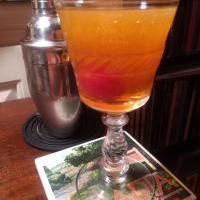 This is a merry widow, with ulterior motives!
This is a merry widow, with ulterior motives!
This is a fascinating sweet cocktail of the type that may end the evening unexpectedly...
It's really rather too sweet for my tastes. I think it works best as an after-dinner drink.
 This is a merry widow, with ulterior motives!
This is a merry widow, with ulterior motives!
This is a fascinating sweet cocktail of the type that may end the evening unexpectedly...
It's really rather too sweet for my tastes. I think it works best as an after-dinner drink.
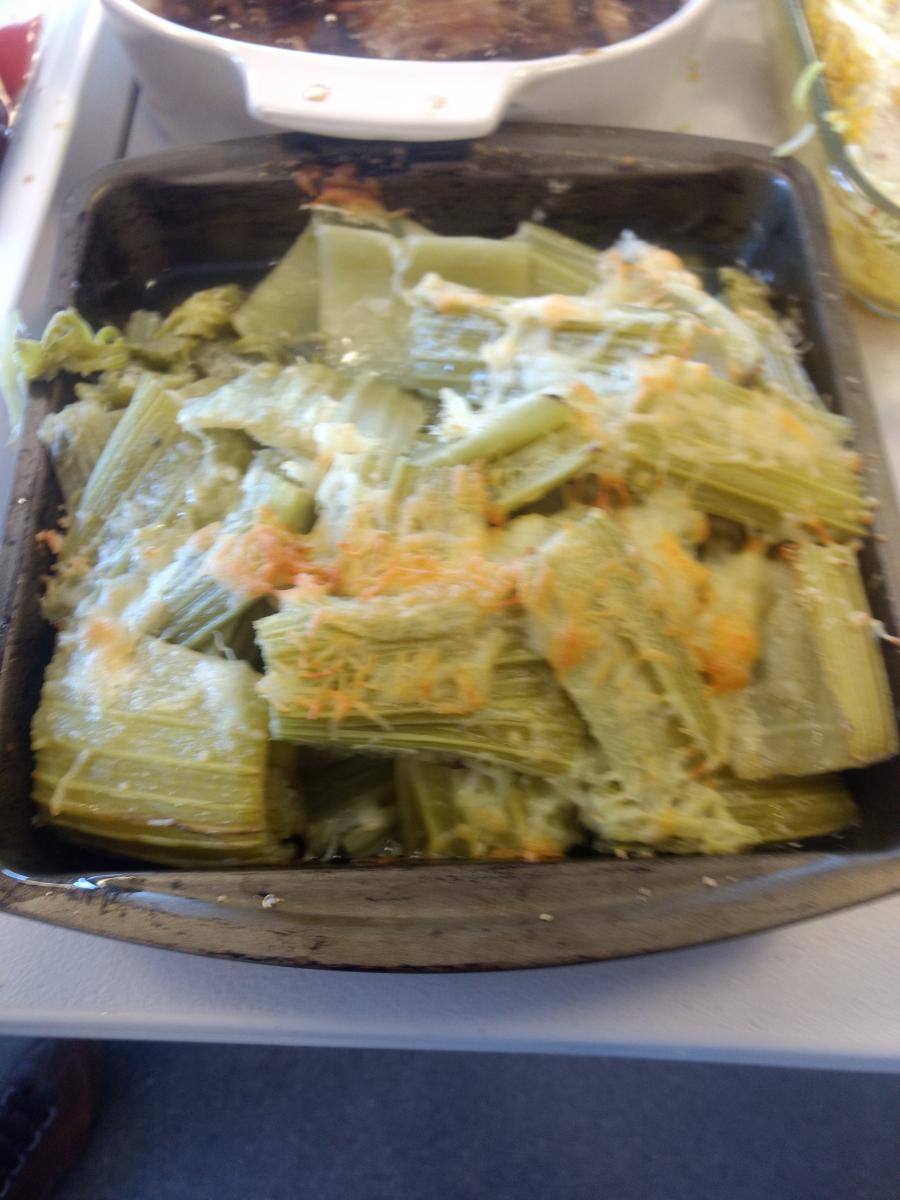
This hard-to-find, visually-unappealing, finicky vegetable is worth the hunt and the longish preparation.
I had searched for cardoons for years every late fall/early winter, with no success. Albie's Produce in the North End and even Eataly in Boston's Back Bay had failed me.
Then a double-stroke of good luck brought me success! The produce manager at my local Stop & Shop acidentally got a shipment of cardoons from California, and I happened to be at the store on that morning.

I sort-of recognized this long-sought vegetable, but I wasn't sure. Fortunately they were labelled Cardones, the Italian name for the vegetable, so it was easy to connect the name.
The raw vegetable is very bitter, but 30 minutes of boiling extracts most of the bitterness, leaving only a bracing aftertaste that complements a rich buttery or cheesy sauce.
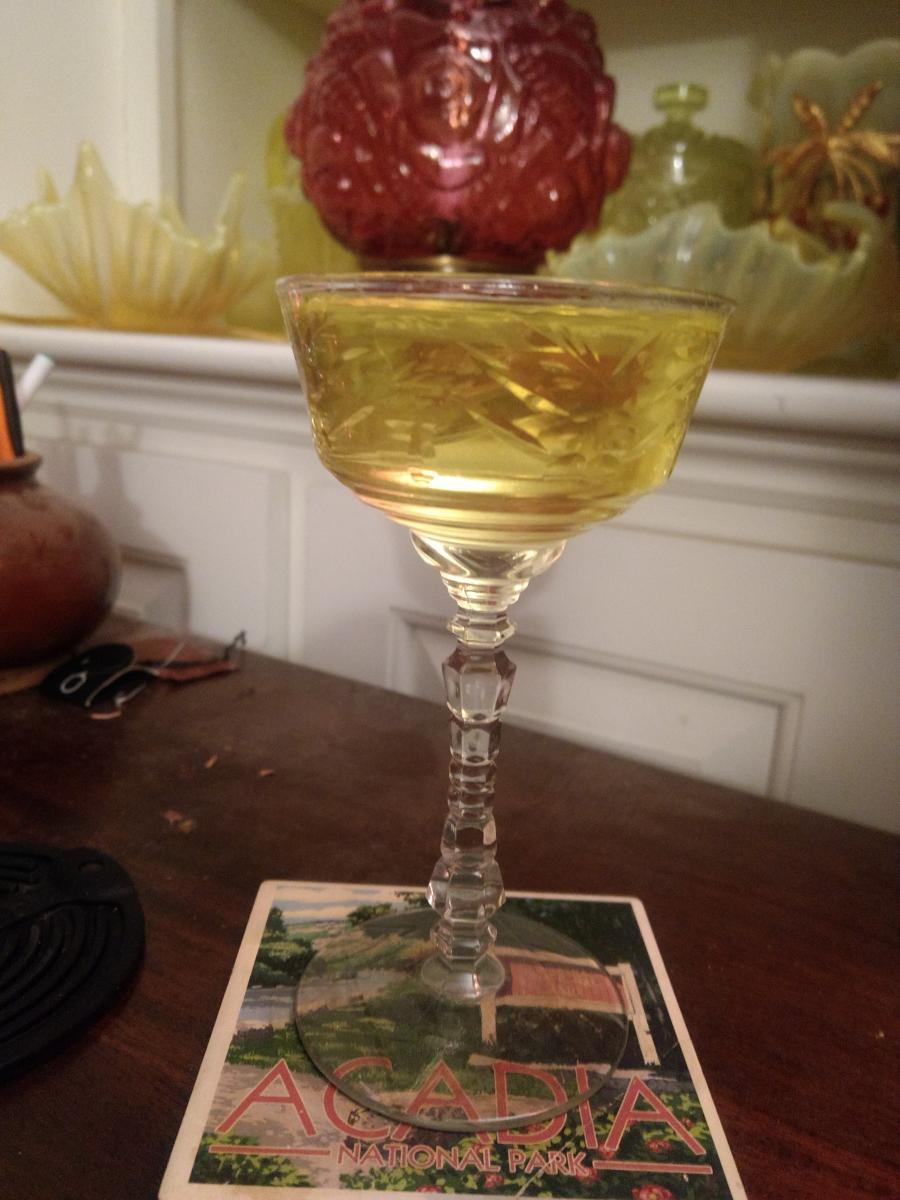
Nobody knows for sure why this is called Alaska. One theory is that it was named for the Alaska Gold Rush. Whatever the truth is, it sure is tasty!
The Alaska Cocktail is essentially a Martini with Yellow Chartreuse instead of Dry Vermouth.
This makes it a very different and wonderful symphony of herbal flavors with a delightful color - all in all an exceptional cocktail experience!
Yellow Chartreuse is more sweet than the green, so 2 dashes of Orange Bitters are an optional improvement.
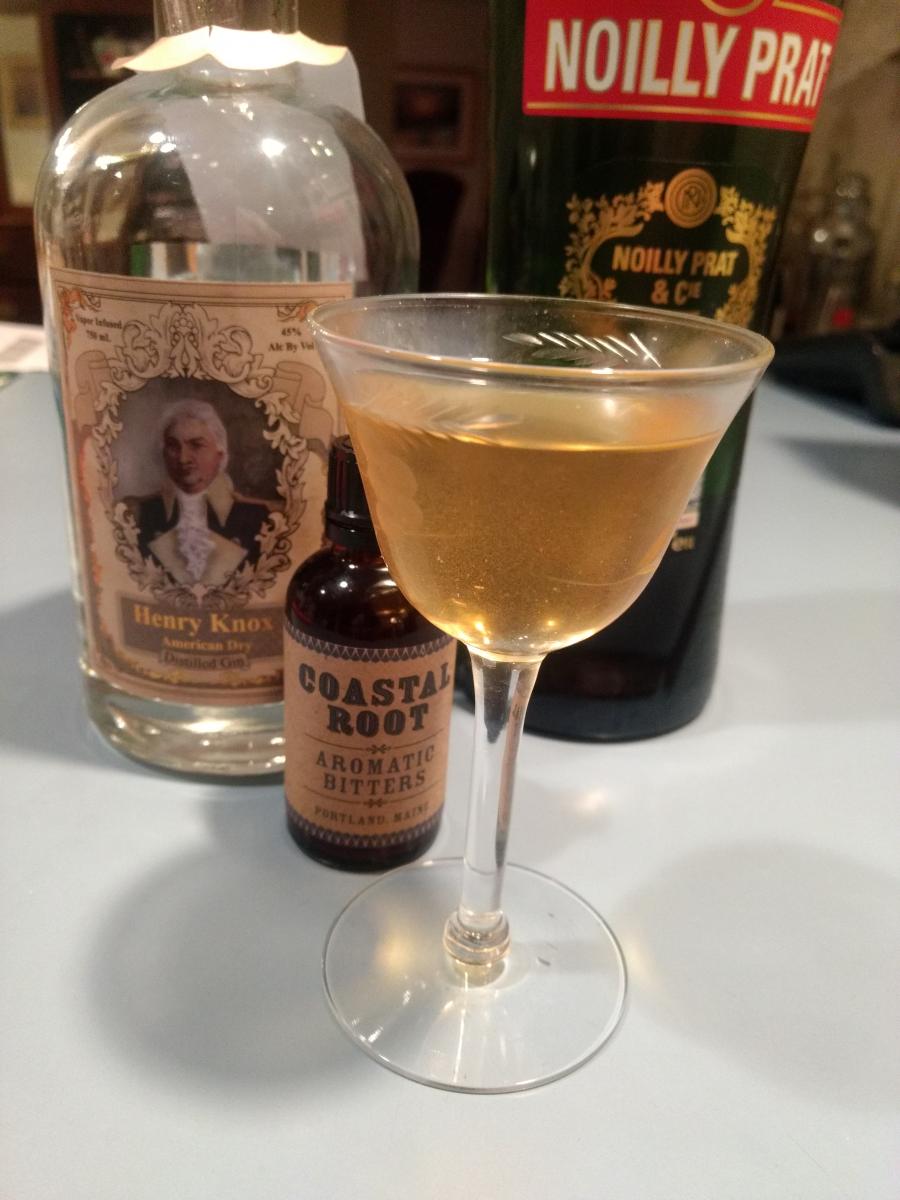
This is a potent little cocktail, being almost entirely gin!
When I discovered Djinn Spirits' Henry Knox gin, I knew exactly which cocktail to try it in. In 1775, Henry managed the transportation of 60 tons of captured British artillery 300 miles from Fort Ticonderoga to Boston, where it was instrumental in forcing the British Evacuation. Knox ultimately became our first Secretary of War (now called Secretary of Defense).
I made this with the Henry Knox gin and with the Coastal Roots (of Portland) Aromatic Bitters; it was perfect!
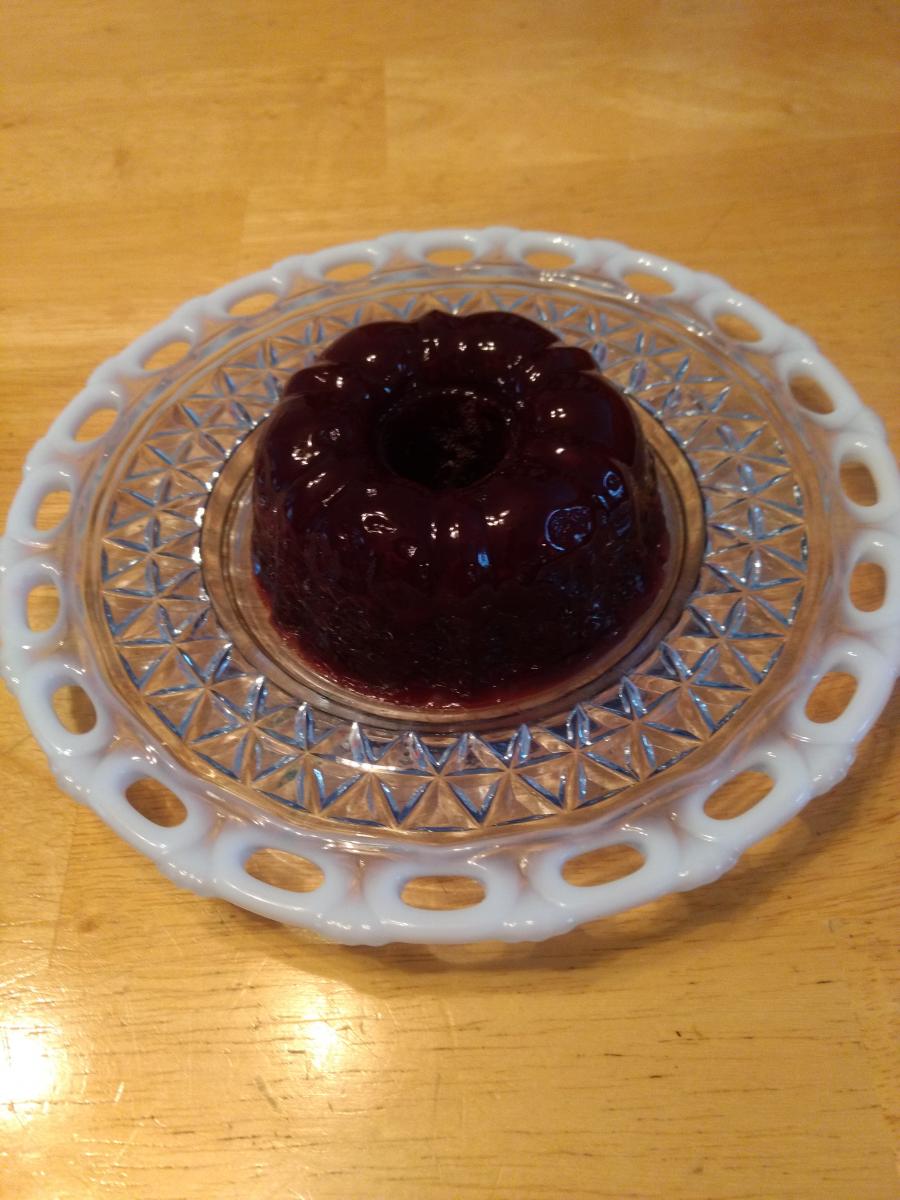 Sarah Josepha Hale was an amazing woman who pretty well invented the Thanksgiving holiday. I encourage you to read about her on Wikipedia.
Sarah Josepha Hale was an amazing woman who pretty well invented the Thanksgiving holiday. I encourage you to read about her on Wikipedia.
This simple, attractive, and delicious version is superior to the familiar tinned variety in every way except convenience, and it's not so inconvenient to make, either.
The flavor is tart, sweet, rich, and complex. This is good enough to enjoy with many roasted or grilled meats at any time of year, and because it molds so well, it can ornament a fancy holiday table.

I can find no history on this libation, but an online search finds many hits, all with essentially the same simple recipe: equal parts of gin, dry vermouth, and "cherry brandy".
"Why the quote marks?" you ask. Well, it's complicated.
According to Ted Haigh's authoritative Vintage Spirits and Forgotten Cocktails when this cocktail was probably created, cherry brandy meant cheap brandy with sweet cherry flavor and red color. If it is more recent, then cherry brandy could mean an excellent all-natural eau-de-vie or a fine Austrian schnaps, or even kirschwasser. All of the latter are flavorful but much less sweet, and colorless.
I tried it both ways, first with the sweet red Dutch Cherry Heering, and then with the cherry eau-de-vie from Westford Hill Distillers in Connecticut.
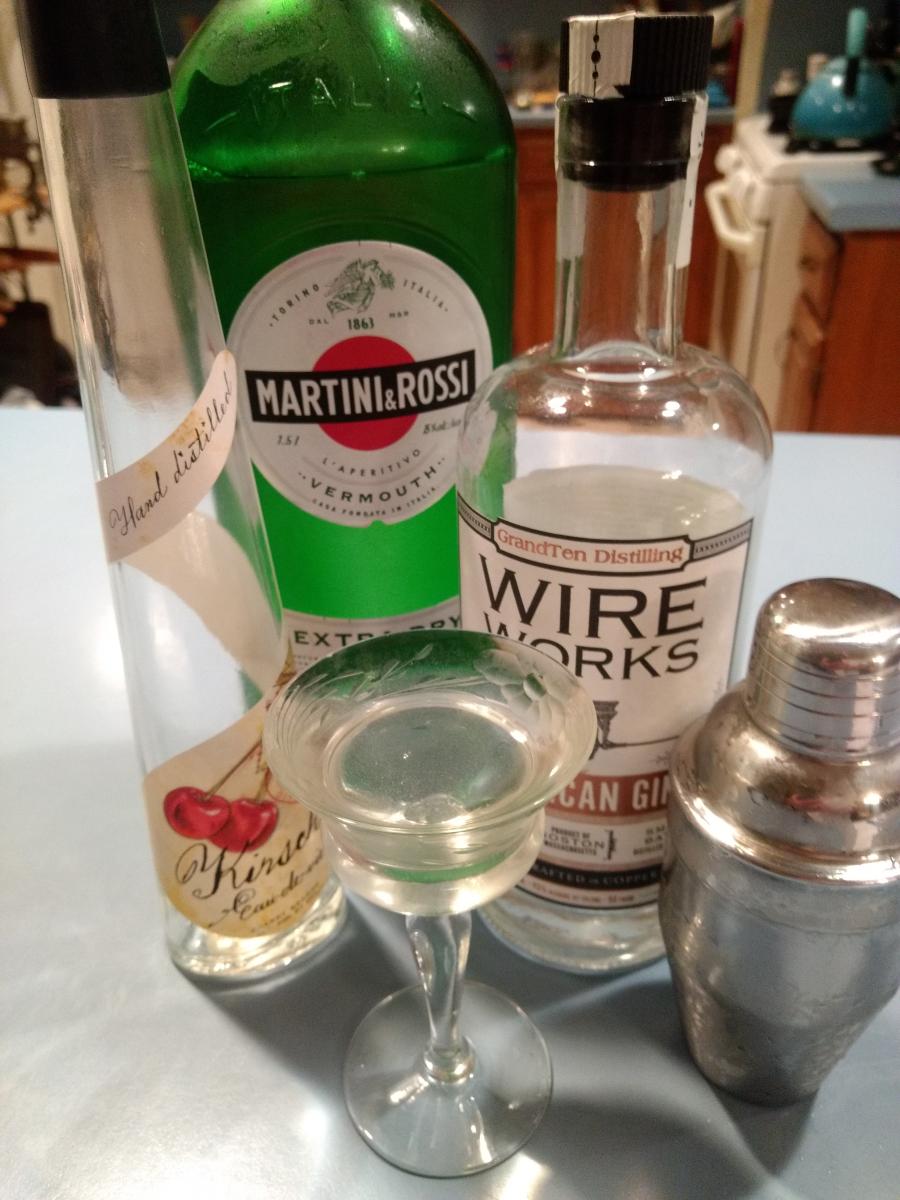
I really didn't care for the sweet version. I found it pretty but cloying and not very interesting. Any kisses in the dark that I had under such circumstances never amounted to anything lasting.
The dry version was much more interesting and thought-provoking, although it was visually no more appealing than a Martini. Well, there you have it: after a trying week, I find greater refreshment in "interesting and thought-provoking" than I do in "sweet and visually appealing".
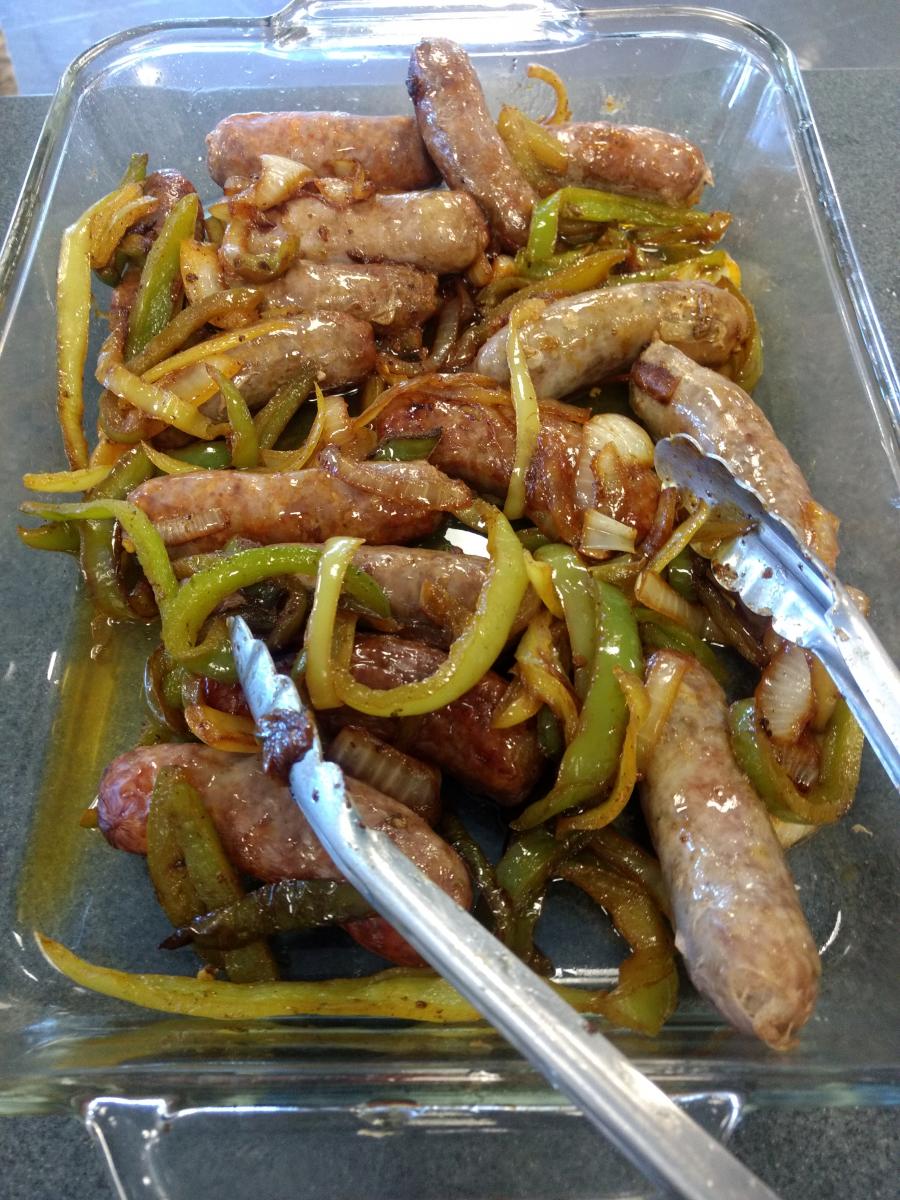 This is a classic outside of Fenway Park on game day and at countless other public and family events across the Bay State and New England. It's easy, cheap, and a great crowd-pleaser.
This is a classic outside of Fenway Park on game day and at countless other public and family events across the Bay State and New England. It's easy, cheap, and a great crowd-pleaser.
The secret to success here is the perfection of each ingredient. The sausages are the star, so they have to be great - cooked through and with crispy skins, the melted fat saved for the important work ahead. The onions and peppers work best cooked separately or serially. Red and green peppers are a great combination but you can do fine with all green peppers or with whatever your garden/CSA share gives you. A proper New England bun is great, but this works well on pasta too.
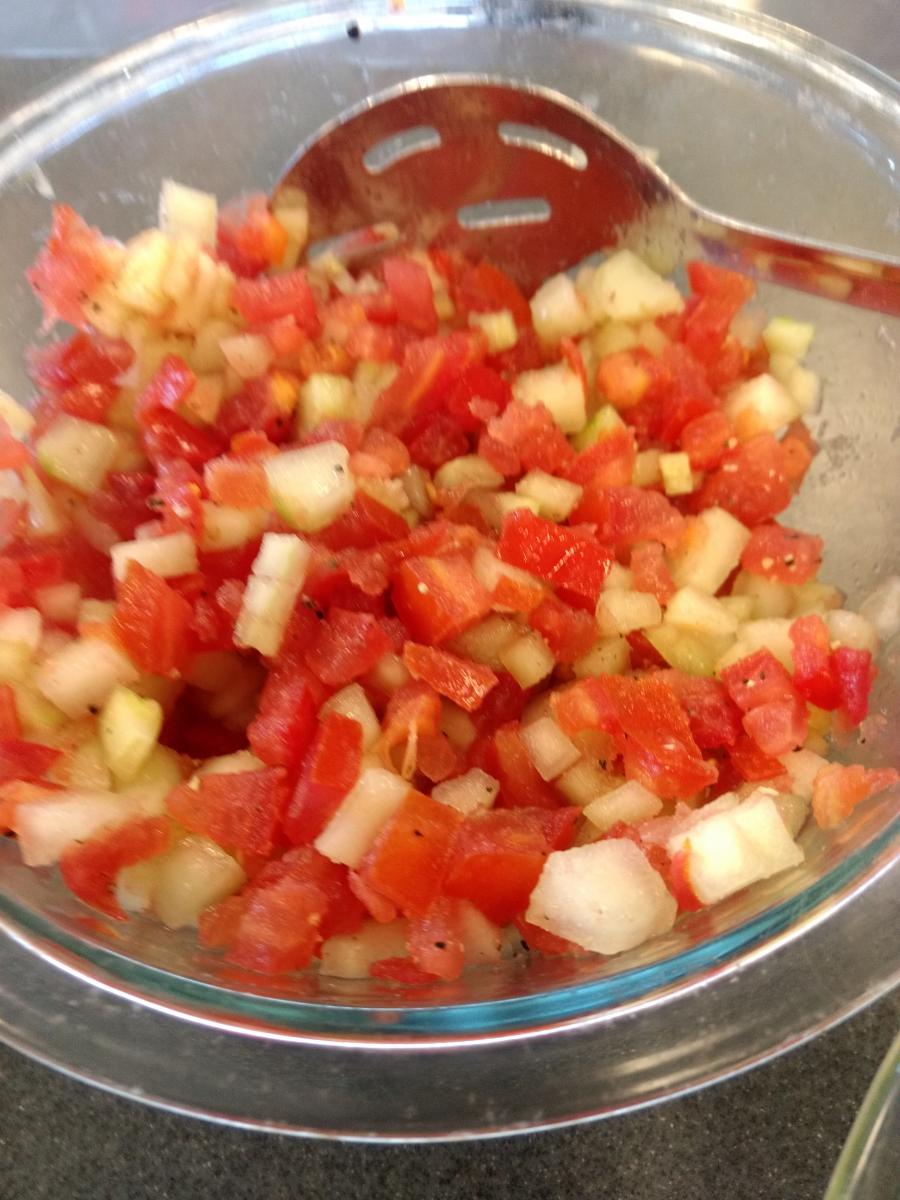 I used to make this refreshing summer salad with my friend and co-worker Viren before he returned to Gujarat, India. It's a great burst of summertime flavor, with just summer-fresh tomato and cucumber, maybe a little onion, and salt and pepper. No oil or vinegar are needed. The contrasting colors look like little gems, and the flavors are great together.
I used to make this refreshing summer salad with my friend and co-worker Viren before he returned to Gujarat, India. It's a great burst of summertime flavor, with just summer-fresh tomato and cucumber, maybe a little onion, and salt and pepper. No oil or vinegar are needed. The contrasting colors look like little gems, and the flavors are great together.
There are many ways to make a Kachumber Salad, and many of my Indian colleagues had other ideas. I'll call this one Viren's Kachumber Salad because I learned it from him.
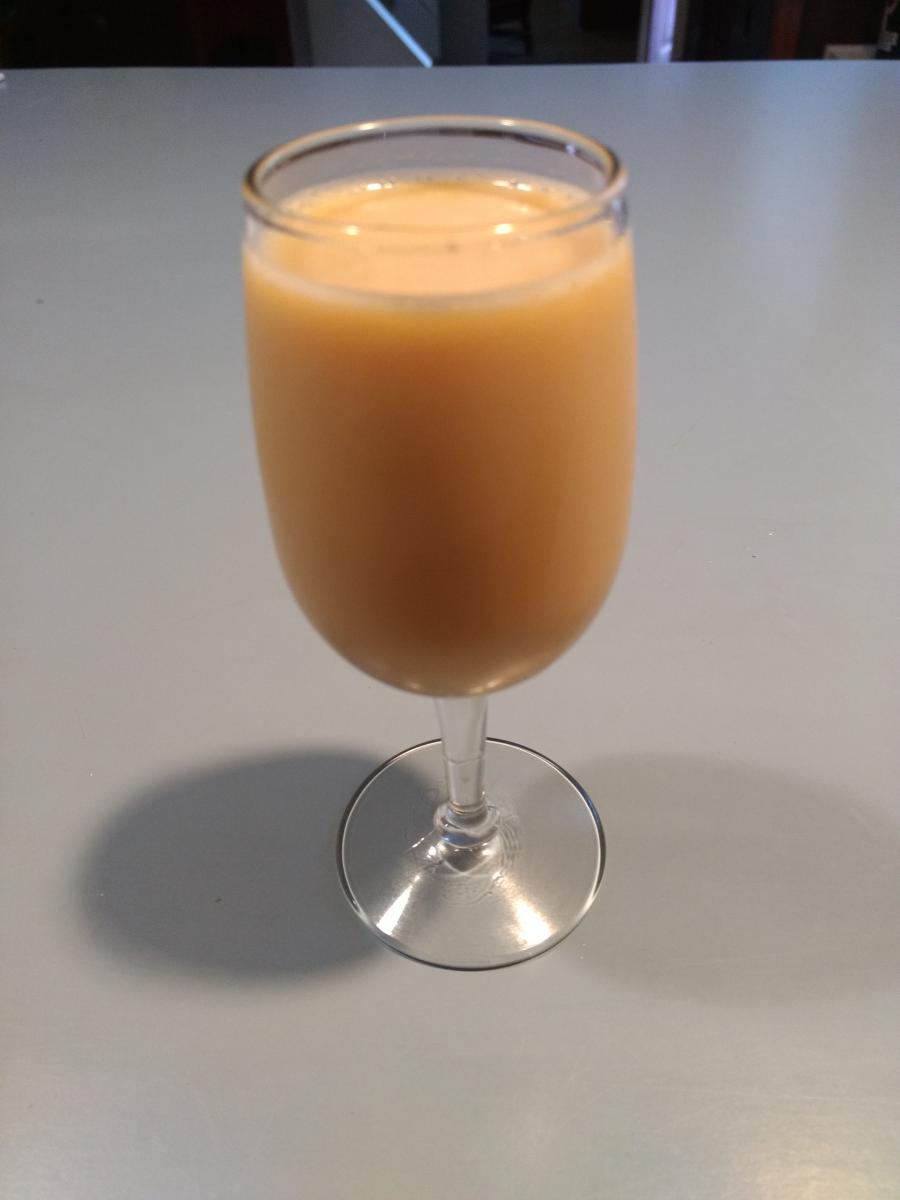
With a name like Bosom Caresser, I could only resist so long. It's not that I have anything against caressing bosoms, should the opportunity arise, but I thought it must be something trendy, relying on a silly name to get attention in a crowded market. Except nobody knows this one anymore. Research was called for.
The recipes for the Bosom Caresser fall into two very different groups, a complex interesting version with an egg yolk (I think this is the older version) and then a much simpler version recorded in Mr. Boston and published in many places online. In both cases it is a sweet cocktail, but in the first instance it is sweet like a great dessert, and in the second it's just sweet and boring.
The top image here is what I believe to be the classic recipe, with the egg yolk, documented here. It's not a beautiful drink, but it's an experience!
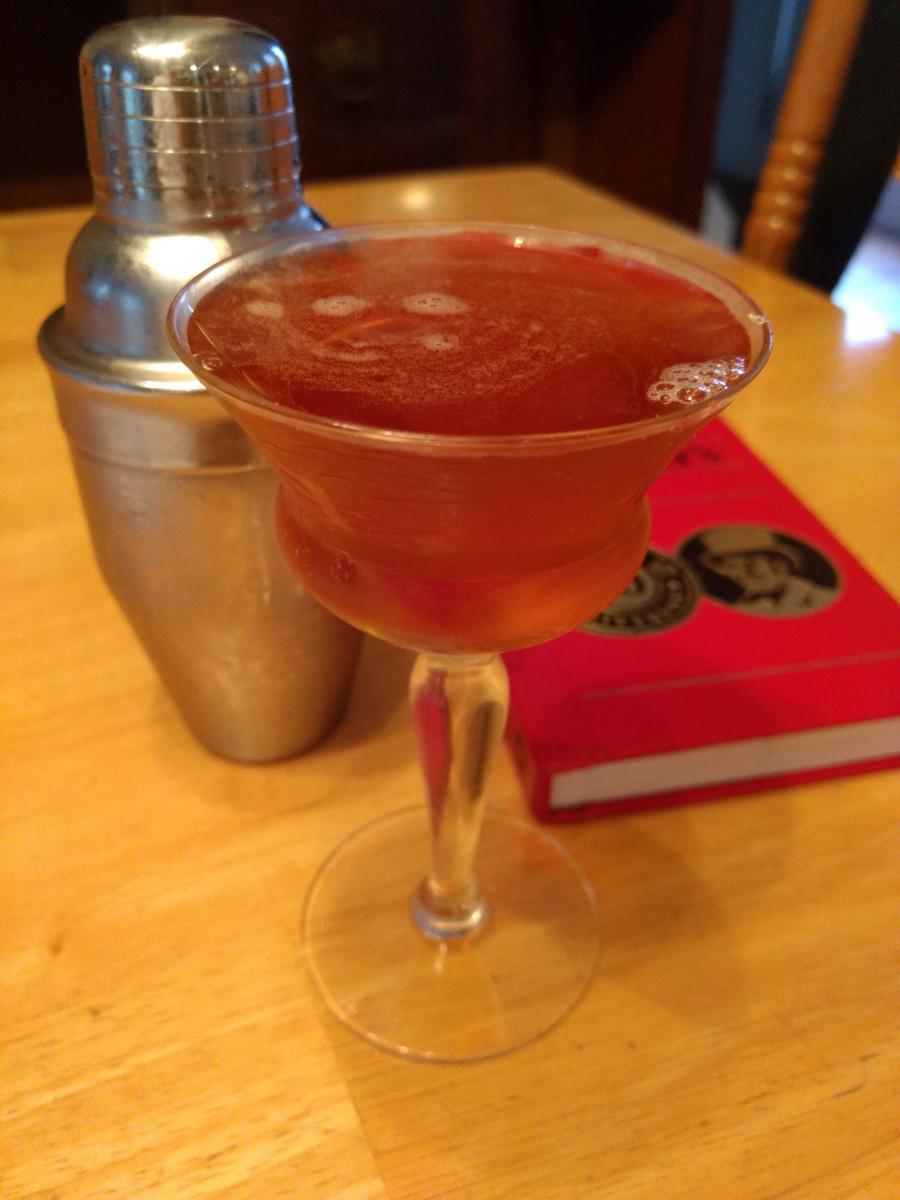
The bottom image is the simpler version in the Mr. Boston Official Bartender's Guide, made of 2:2:1 brandy, madeira, and triple sec, and much too sweet and simple to be taken seriously alongside the other version.
The old version is made with egg yolk. We don't see a lot of egg yolk recipes these days, but there are plenty of them in the books, often called the Royal something-or-other. For example, there's a Clover Club Cocktail and a Royal Clover Club, the latter being distinguished by the addition of an egg yolk.
It's really an interesting cocktail! This is not a dry before-dinner aperitivo - it is sweet and complex and the egg yolk gives a great mouthfeel. It's sort of a brandied eggnog, with madeira instead of cream. This is a drink to make for company on a cool evening after dinner instead of a sugary dessert.

Here's an easy and tasty way to use the ton of zucchini and summer squash that arrive this time of year.
All you do is cut the squash into serving size pieces, dress with olive oil, salt, and whatever seasonings will go well with the final dinner. Then roast at high temperature until it's ready.
I served it here with roast pork, and it's a great accompaniment to roast meats, but it's also good on its own, or even cold as a picnic dish.
You don't take Amtrak to anyplace a jet can take you if you are in a rush. Even from Boston to NYC, after taking into account the wasted time getting to and in the airports, flying is still usually faster than the train. But if you are on vacation and if your schedule is flexible, then the train can be a great part of an adventure.
In July of 2017 we took the Lake Shore Limited from Boston to Chicago. For the first time in 12 trips, we missed our connection in Chicago due to lateness. The lateness was not due to any error on Amtrak's part, it was just an unusual combination of the things that can happen when you take a train:

Between us, Lorna and I have traveled about 100,000 miles by Amtrak. We have also traveled about 7,500 miles by train in Scotland, England, Greece, Italy, Switzerland, Germany, and France. Considering myself a seasoned rail traveler, I offer these thoughts on how you can have a happy rail adventure.
These are our long-distance train trips on Amtrak:

People frequently ask me about must-see places for foodies visiting Portland. Most recently, I wrote up this list in an email, and then I thought I should post it here:
If I were going to spend a weekend in Portland, I'd want to be sure to check out:
Dining and Drinking:
Shopping
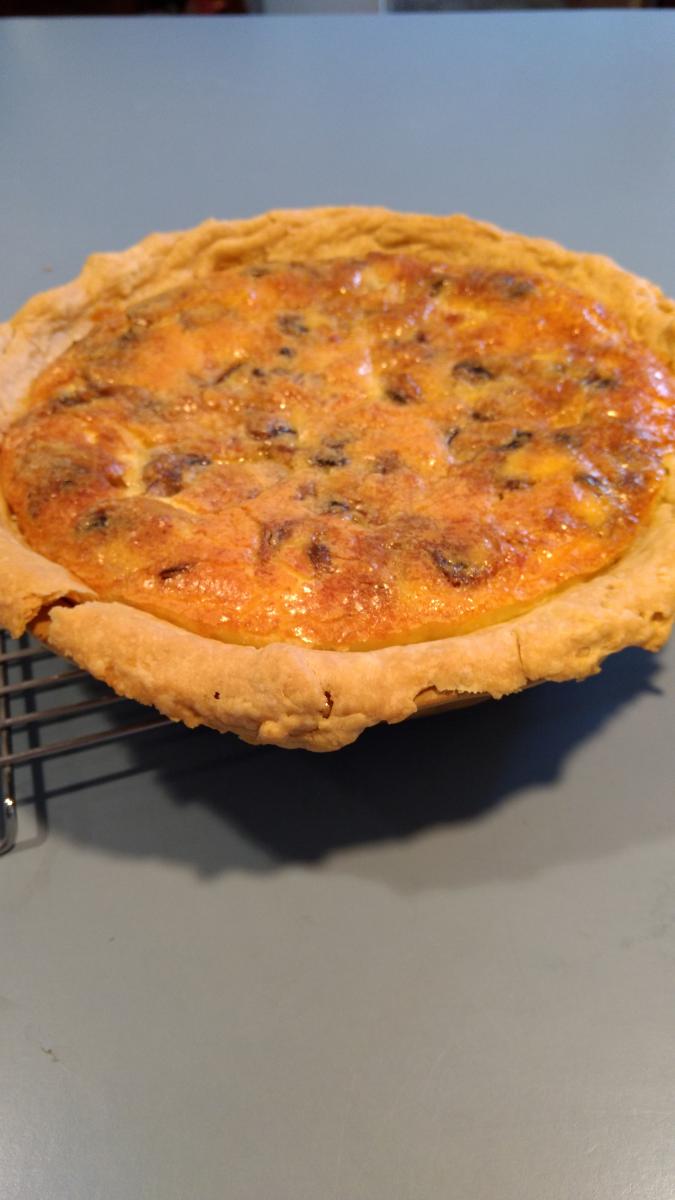
This delicious quiche highlights the little Maine shrimp, with some layers of complexity added by sauteed mushrooms and Parmigiano-Reggiano cheese in a cheesy quiche-custard.
The little Maine shrimp are hard to find, but worth the search. I got a pound of them frozen, cleaned and ready to cook at Pinkham's Seafood in Boothbay, Maine.
Mushrooms add a great note to all manner of crustacean dishes - shrimp, crab, and of course lobster. Mushrooms also feature prominently in Russian cuisine, so in this recipe I bring in a Russian note with a pinch of dill.
For cheese I used the fine Italian Parmigiana-Reggiano for the warmth that it brings. In hot weather I might try a ricotta, but I made this on a rainy, blustery Mother's Day so the king of Italian cheeses was called into service.

On the day of an exciting election in France, we had our friends Kurt & Debbie over for a feast from Burgundy.
I love the cuisine of Burgundy, and not just the celebrated wine. When we toured France in 2015, we drove from Lyon in the south to Dijon in the north and back again, through Beaujolais and the Cotes de Nuit to the Cotes d'Or.
We drove past vineyards large and small, with gorgeous old manor-houses and rustic outbuildings and other structures that made no sense to us. Among the vineyards on hills poorly suited for grapes were farms producing beautiful produce.
Burgundy is known for food of all kinds. The inhabitants of the medieval gray stone buildings of Dijon in the north are fond of cheeses, pork, mushrooms, cream, and of course mustard.
At the southern end, just past Beaujolais, is Lyon, the culinary capital of France. There is a long tradition of courtly fare, but for this feast, I focused on the well-known hearty country fare.

We enjoyed:
